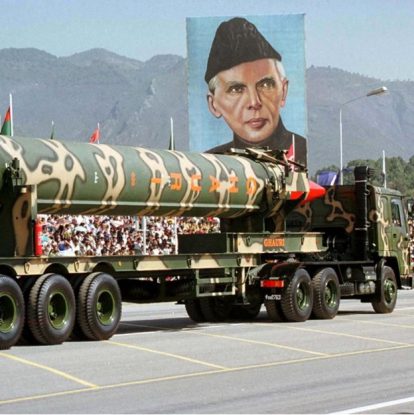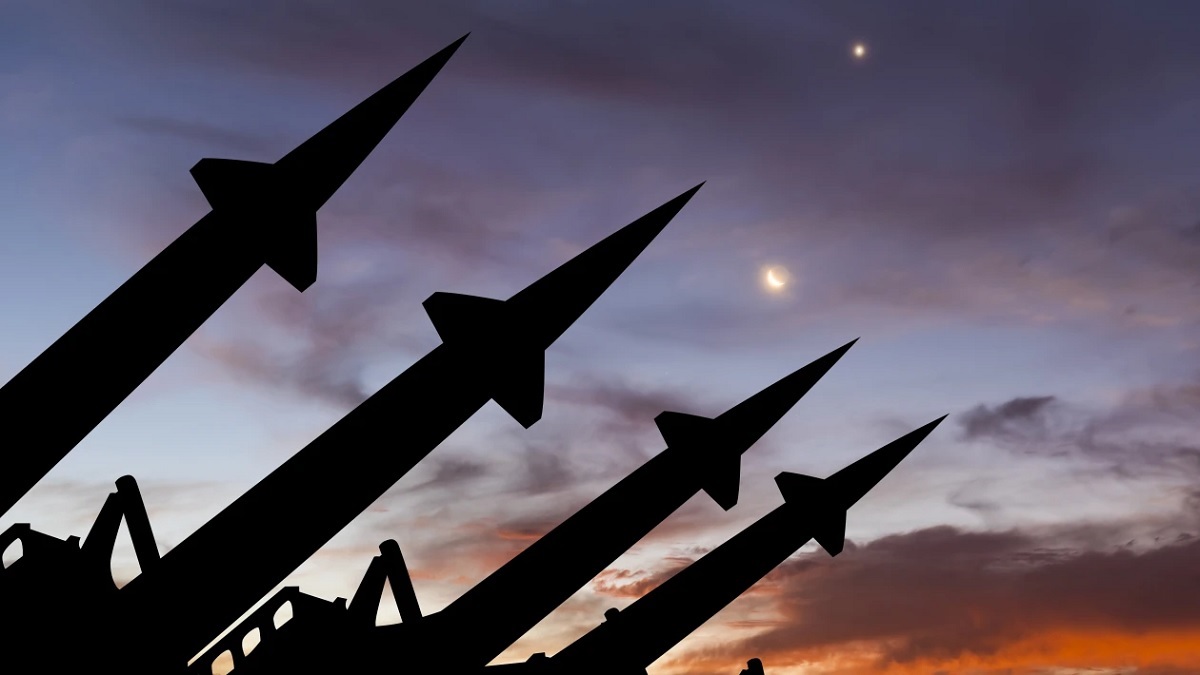Nuclear weapons are so powerful that warhead could kill thousands of people that have everlasting in devastating humanitarian, as well as environmental side-effects. Although there are a lot of side-effects. Many countries have achieved nuclear weaponization in order to combat the rivalries, and to create a balance between the two. The states have a nuclear power are:
- Russia
- United States
- United Kingdom
- France
- China
- Pakistan
- India
- Israel
- North Korea
These are the countries which have nuclear weapons together. All these countries possess almost around 13,000 nuclear weapons. Most of the nuclear weapons are much more powerful than those which were dropped on Hiroshima after World War II.
Nuclear weaponization after World War II, when the United States dropped Bomb at Hiroshima and Nagasaki is a result of the lethal war. The bomb dropped on Hiroshima was named as a little boy, and the one which was dropped on Nagasaki was named as the fat man. This nuclear bomb devastated these areas, and they have never been able to reconstruct and rebuilt themselves the same way since then.
People living in these areas prone to mini skin diseases and cancers. The life of those people has never been the same their genes have been mutated and their generations are also suffering due to the radiation is in after effects of this deadly incident.
Read More: The Cost of Terrorism in Pakistan and the Way Forward – About Pakistan
Types Of Nuclear Weapons
Historically, there have been three basic types of nuclear weapons.
- Pure Fission Weapon
The simplest type and the only one ever used in warfare. Fission weapons release energy by splitting atoms, typically uranium or plutonium.
- Enhanced Fission Weapons
These weapons achieve twice the destructive power of nuclear fission (nuclear fission) explosions by injecting a fusion fuel (nuclear bond) that amplifies the reaction.
- Staged Thermonuclear Weapon
The most destructive type of nuclear weapon. These warheads use nuclear fission or an enhanced fission reaction to create a pure fusion reaction with up to 100 times more destructive power. Historically, fission weapons have been called nuclear/nuclear bombs and fusion weapons have been called hydrogen bombs. Today, “nuclear bomb” has been replaced by “nuclear weapon”, which is also used as a generic term for these weapons, and “hydrogen bomb” has been replaced by “thermonuclear weapon”.
Nuclear Warheads Each Country Possessed
The number of warheads each country possesses are as under:
- Russia has almost 6255 nuclear warheads
- United States of America has 5550 nuclear
- China has around 350 nuclear warheads
- France has around 290 nuclear warheads
- United Kingdom has 225 nuclear warheads
- Pakistan has 165 nuclear warheads
- India has 156 nuclear warheads
- Israel has 90 nuclear warheads
- North Korea has 40 to 50 nuclear warheads
Nations Hosting US Nuclear Weapons
There are the five nations which are hosting United States nuclear weapons. These are:
- Turkey
- Italy
- Belgium
- Germany
- Netherlands
Treaties Of Nuclear Weapons
Many countries have signed treaties to proliferate nuclear weapon, because these nuclear bombs are settled, and they can bring the countries at the brink of world war III.
Treaty on the prohibition of nuclear weapons (TPNW)
- Russia has not yet signed or ratified any treaty on the prohibition of nuclear weapons, Russia has constantly voted against the annual UNGA United Nations, General assembly resolution since 2018 that welcomes the adoption of TPNW that towards the adoption of the TPNW and want state to sign, ratify or accede at the earliest possible date.
- Similarly, United States and all other states have also not ratified or acceded to the TPNW.
Modernized Nuclear Weapons
The use of nuclear weapons to end World War II set off an arms race among the nations of the world, specifically between the United States and the newly formed Union of Soviet Socialist Republics USSR (Soviet Union). The nuclear proliferation reached its pinnacle in 1986, with approximately 70,000 missile-carrying nuclear warheads, before declining rapidly due to mutual disarmament agreements such as the 1987 Intermediate-Range Nuclear Forces Treaty (INF) and strategic arms reduction negotiations. It declined rapidly in the 80’s and continued intermittently. As of 2021, it is estimated that there are over 13,000 nuclear warheads available worldwide.
Read More: Top Pakistani Fighter Jets Used By PAF – About Pakistan
Nuclear States
There are eight different countries around the world have successfully detonated nuclear weapons, and a ninth appears to be capable of doing so. The 1970 Treaty on the Non-Proliferation of Nuclear Weapons, also known as the Non-Proliferation Treaty NPT, allows his five permanent members of the United Nations Security Council—the United States, Russia, China, France, and the United Kingdom—to possess nuclear weapons. Weapons must be used on their own territory without justification or explanation.
Non-Proliferation Treaty (NPT)
North Korea, India and Pakistan have conducted nuclear tests, even though they have not signed the NPT. Of these three, North Korea’s nuclear capabilities are the most notable. The country appears to be in violation of UN resolutions banning North Korea from developing nuclear weapons or ballistic missiles.
The Middle Eastern country of Israel, known to many Christians, Muslims and Jews as a holy land, is not known to have tested nuclear weapons, but is known to possess them nonetheless. The Israeli government has refused to confirm or deny the country’s nuclear capabilities.
States that use nuclear power plants to generate electricity could theoretically also develop nuclear weapons, but the Comprehensive Nuclear-Test-Ban Treaty of 1996 prohibits other states from producing or possessing nuclear weapons. These countries include South Africa, Belarus, Ukraine and Kazakhstan.
How Many Nuclear Weapons Do the US And Russia Have?
As of 2021, the US has an estimated 5,550 nuclear weapons. 1,800 have been strategically deployed, and another 3,750 are believed to be in storage or in various states of readiness, although they may become available soon if needed. This is a fraction of the US peak of 31,225 in 1967 and 22,217 in 1989. Russia has also scaled back its nuclear arsenal over the years, but still retains about 6,255 warheads, of which her 1,625 are strategically deployed and ready for launch.
Pakistan’s Nuclear Program

Pakistan’s Nuclear Program started during Ayub Khan Period as a response to Indian nuclear designs which were detrimental to Pakistan’s future. Initially, in 1956 the program was aimed to produce energy by the enactment of Pakistan Atomic Energy Commission. Pakistan’s plan to produce nuclear energy for country’s energy needs was justified by International Atomic Energy Agency’s findings in its study of Pakistan’s electric power needs. Indeed, Nuclear energy is economical as compared to production of energy through fossil fuel, oil, natural gas, coal or hydro-electric projects therefore it is more economical.
Indian Hegemony Over Pakistan
After the 1971 War and preparation of Indian nuclear weapon projects, Pakistan felt threatened and it had to respond to the challenge. On January 1972, Bhutto met with top Pakistani scientists and decided to develop a nuclear weapon capability. Undoubtedly, it was difficult for Pakistan to bear the expenses, but the nation made no compromise on its security and developed a nuclear deterrence as the state had witnessed the always present hostile relations between both neighbors and the consequent wars of 1948, 1965 and 1971. It was the time when Dr. Abdul Qadeer Khan, a Pakistani scientist was brought home from Holland and he offered his services for the nation’s security.
The Indian nuclear explosion of May 1974 at Pokhran ”Smiling Buddha” compelled Pakistan to go nuclear as the explosion had introduced a shift, heavily in Indian favor, in power relation between both countries. So, this led to a journey which ultimately resulted in Pakistan’s nuclear capability though after many hardships.
Read More: Kashmir Issue; A Conflict Between Two States – About Pakistan
International Relations Under The Shadow Of Nuclear Race
The Indian explosions were perceived as a threat that might cause a great deal of destruction and catastrophe if used against any major Pakistani city. Another cause of worry was that India was rapidly developing medium range missiles. Indian explosions added to the worries of the West and particularly USA as well and they started to work against nuclear proliferation and they opposed Pakistan’s acquisition of nuclear technology.
The Western block was more concerned about the possession of nuclear weapon by a Muslim country than by India. They feared that a nuclear weapon by any Islamic country like Pakistan would be an Islamic bomb which might eventually pass to any other Muslim country in the Middle East, thereby posing a threat to American patronized Israel. Therefore, Pakistan came under strong pressure when it started to develop its nuclear capability. Pressler amendments and many other diplomatic tactics were used to undermine Pakistan’s commitment to the right of nuclear capability.
Z.A Bhutto was pressurized to stop the program, but he refused to do so. Bhutto was followed by Zia-ul-Haq, he too stood affirmed against US pressure and Pakistan’s nuclear program went ahead. Dr. Abdul Qadeer and his team worked day and night with passion for the acquisition of nuclear capability for Pakistan’s security. Dr. Abdul Qadeer Khan in 1984 declared that successful cold tests had been conducted, but Pakistan’s acquisition of the nuclear bomb was officially confirmed by the successful explosion during the premiership of Muhammad Nawaz Sharif on May 28, 1998. On May 1998, seven nuclear explosions were carried out at Chagai and this very day is celebrated in Pakistan as Yaum-e-Takbeer.
Impact Of Nuclear Program Upon Pakistan Economy
The nuclear deterrence has kept India at bay and has been helpful to establish a durable peace between India and Pakistan. The nuclear tests were highly criticized by the international community and the international bodies like United Nations Security Council passed a unanimous resolution urging India and Pakistan to close down the nuclear weapon programs and both were asked to sign CTBT. Pakistan accepted it on the condition that India shall be its earlier signatory. The nuclear power acquired by Pakistan for self-defense entailed economic sanctions by the international community, particularly from the US and Western countries. Although Pakistan was generously helped by Saudi Arabia during these moments of diplomatic stagnation and exclusion yet the economy had a free fall as a consequence.

















